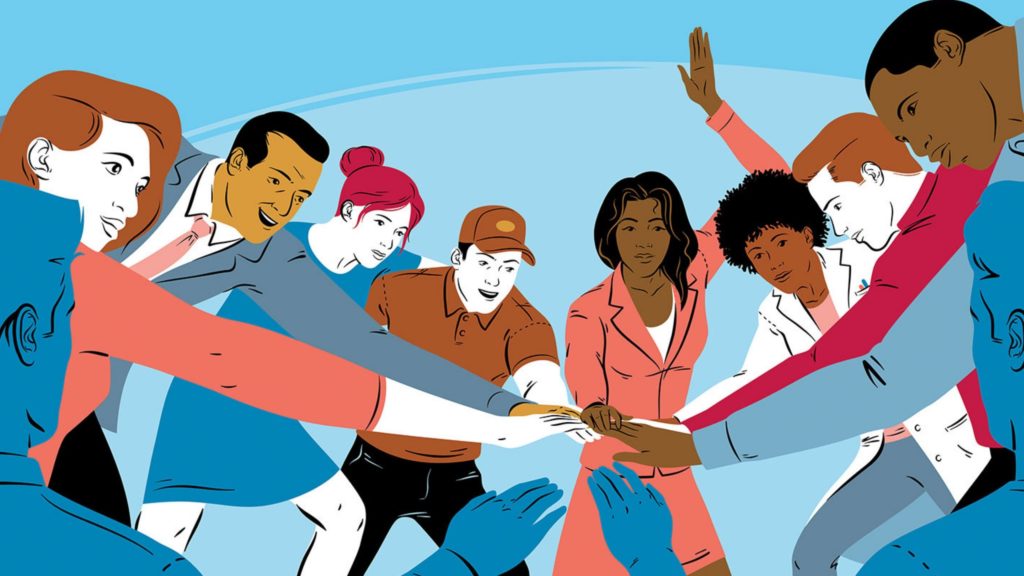Where are our BME leaders in education?

So why is it that our school leadership teams are not representative of the changing demographics, with only 3% of headteachers in the UK being from a BME background?
Yet some schools in London have up to 70% of their students from a BME background, and across the UK a total of 28.5 per cent of primary pupils and 24.2 per cent of secondary students are from BME groups.
Where are our BME leaders, and will we ever be able to address this significant and detrimental concern?
As of June 2018, the UK population was 66.96 million, and according to studies the proportion of UK citizens from ethnic minority communities is expected to double in the next few decades.
Over the past 10 years, the ethnic minority population has almost doubled and is now at least 8 million people, or 14 per cent of the UK population (Policy Exchange study).
The UK’s five largest distinct ethnic groups are:
- Pakistani – 1,124,511
- Black African – 989,628
- Black Caribbean – 594,825
- Bangladeshi – 447,201
- Indian – 1,412,958
According to the Policy Exchange study, these BME groups accounted for 80 per cent of the UK’s population growth over the past 10 years, with Black Africans being the fastest growing group with London, Liverpool, Birmingham and Manchester having the largest population of BME groups.
Pupils from Asian and Black origins are the two largest minorities in secondary schools, and in pupil referral units (PRU), there are a greater proportion of black pupils and pupils from mixed ethnic origins than in mainstream schools, and a smaller proportion of Asian pupils.

As of May 2015, 18,000 BME teachers qualified in the UK, yet only 104 were headteachers. In 1967, Tony’ O’Connor was appointed as Britain’s first black headteacher in the West Midlands, with Yvonne Conolly following in 1969 in London, and Betty Campbell in the 1970s became Wales’ first black headteacher.
However, in 50 years, the number of BME headteachers has not grown at the same rate as the BME population has. 2017 statistics from the Department for Education shows that just 3.2% of state-funded secondary headteachers identified as non-white, while for primary school headteachers, the figure was 2.4%.
In January 2016 official figures showed that just 39 secondary head teachers in England were black. A government report by Lord Swann in 1985, referenced that there were “disproportionately low numbers of teachers of ethnic-minority origin in our schools”; 34 years on and this statistic unfortunately still remains.
BME students benefit hugely from seeing BME staff in leadership positions, and having these positive role models is essential in helping to inspire children to be aspirational, and for them and their parents/carers are able to see people who ‘look like them’ in positions of authority and responsibility.
Diversity also allows them to see school as a place that welcomes them and to consider education as a profession where they could be successful. The under-representation of BME leaders may put BME students off a teaching career, and this may be the reason for the continued low numbers of BME people entering the profession.
Having a leadership team from a range of ethnic backgrounds helps to develop good relationships between students and staff of all backgrounds, and encourages diversity into the school community. This, in turn, encourages students and other stakeholders to value different cultural traditions and beliefs, helping to create a culture of tolerance, respect and support.
Racial stereotypes can be challenged and those diverse leaders can influence changes throughout the school to address any issues of discrimination against students, staff and parents – who in turn will be more likely to buy into the school ethos and core values as they will feel that they are being represented and heard.

However, in order for the above to be able to happen, much more systemic changes will need to take place within the sector so that teachers already in the profession feel that they can progress and will not be discriminated against.
According to research carried out by NASUWT and the National College for Leadership of Schools and Children’s Services (2010), BME teachers face significant racism within the education system. Of the 500 BME teachers surveyed by Manchester University and Education Data Surveys, over half (54%) of them said they had faced discrimination in their careers.
The Report ‘Leadership Aspirations and Careers of Black and Minority Ethnic Teachers’, looked at the career experiences of over 500 BME teachers and how discrimination had affected their career opportunities and concluded the majority did not believe the teaching system is inclusive:-
- Male BME teachers perceived discrimination as their greatest problem.
- Female BME teachers said that lack of confidence was the second most commonly cited barrier.
- African teachers said that a lack of recognition of overseas experience and qualifications was a significant barrier.
- 70% of respondents said it was harder for BME teachers to secure leadership positions than is the case for other teachers.
All schools must take responsibility for encouraging talented BME teachers into leadership positions. Senior leadership teams and governors should identify staff members with potential and fully support them to take up opportunities to address diversity within the school environment.
The issue of under-representation of BME leaders must be seen as a whole school issue and be a focus that is embedded within the entire school ethos of inclusivity and staff progression.

All schools need to recognise that having a diverse leadership team is hugely important and beneficial for their students, parents and staff, in helping to create those vital role models for the next generation to aspire to be and to help remove racial stereotypes.
Diversity in our society is imperative, and schools are the best environments to help foster this key fundamental expectation; a life skill that is needed in all aspects of life so that there is an understanding and mutual respect for people from all backgrounds, which encourages everyone to reach their full potential based on nothing more than their ability to do the job well.
Local authorities also need to play their part in monitoring the number of senior leadership applications made by BME teachers, as presently only 37% record the number of applications for SLT roles by gender, ethnicity and disability.
Plans to enforce the government’s Ethnicity Pay Gap bill, which is aimed at creating a fairer and more diverse workforce and removing the barriers facing (BME) employees in progressing to the highest positions of an organisation, may make some in-roads into all organisations within the UK having to analyse current practices and put steps in place to address the imbalance of both direct and indirect discrimination.








Responses